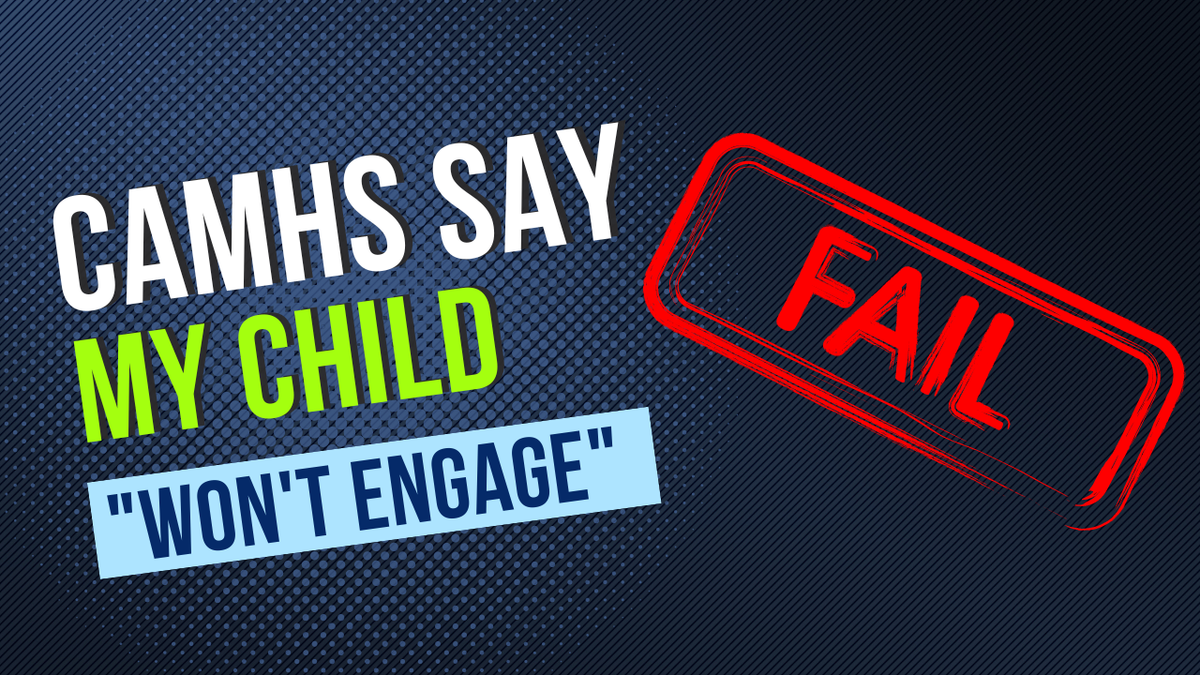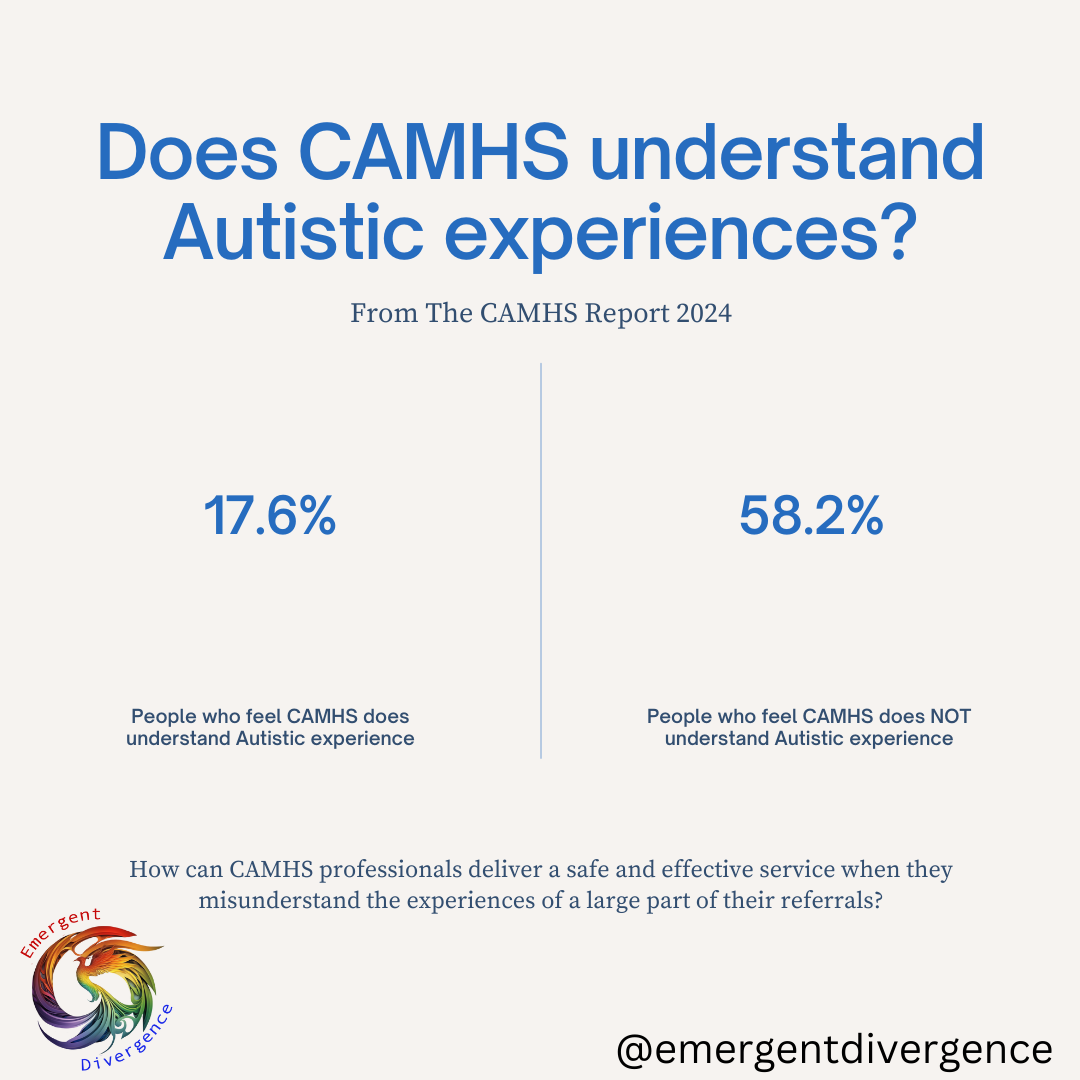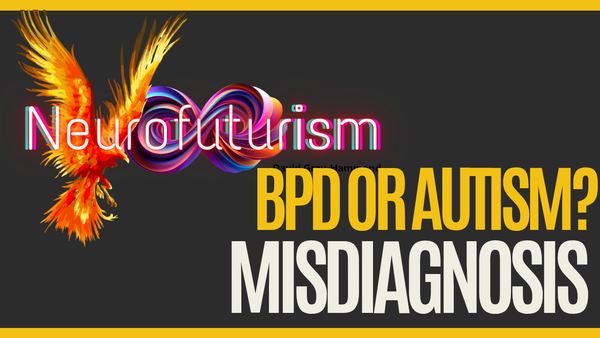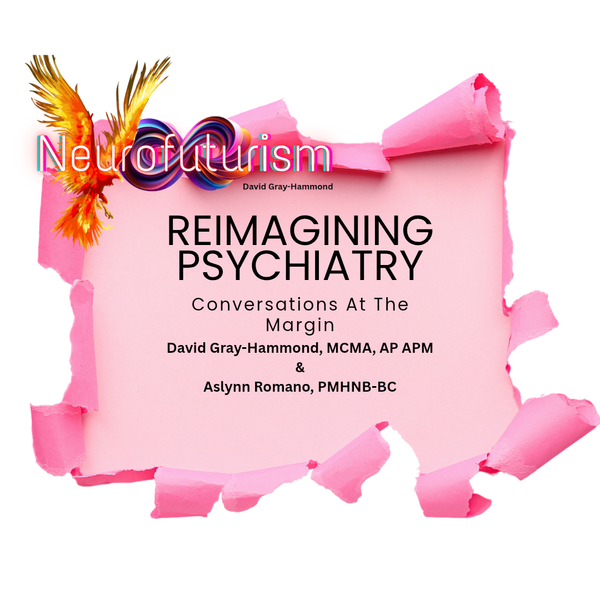CAMHS and the children who "won't engage"

Child and Adolescent Mental Health Services (CAMHS) are notorious for failing to support Autistic children and young people. I have recently explored that Autistic families have a particularly difficult time accessing their services. One of the most common reactions from CAMHS professionals working with Autistic service users is that the child or young person "won't engage". This has become a stock response for any Autistic person who won't conform to their neuronormative services, but in reality, it's a systemic microaggression that highlights deeply entrenched ableism in the service.
Are CAMHS the ones who won't engage?
I would start with this quote that I highlight in the qualitative CAMHS report I recently authored:
“Stopped offering any support before building any sort of
connection when distress was too high to attend in
person, no adjustments made, closing letter stated child
"wouldn't engage" as though it was a choice”
This particular quote is a good example of the way that professionals within the service expect Autistic young people to conform to neurotypical standards of engagement. Autistic distress is seen as the wrong sort of distress. When our children show that "wrong" distress and fail to conform to neuronormative attitudes, it is seen as refusal to engage.
Interestingly, CAMHS ideas of refusal to engage echo thr attitudes seen within the education system. Autistic children who struggle with the school environment are positioned as refusing school. The truth in both cases is that Autistic children and young people are not refusing, they simply can't meet the arbitrary standard. By failing to meet an Autistic child where they are, services are failing to engage.
What is the effect of accusing Autistic children of not engaging?
When Autistic children and young people are discharged for not "engaging", we are essentially telling that children that their suffering is their fault. By saying a child won't engage, we place the burden of recovery onto them rather than the adults and systems that are not only better equipped to help but often complicit in the systemic harms that led to the child needing CAMHS to begin with.
"Won't engage" is a systemic euphemism for victim blaming. Files with discharges for not engaging frame the child as "difficult" and "challenging". The truth is that the Autistic child is traumatised, dysregulated, and facing an incredibly unequal playing field. Discharging Autistic children for not engaging on the professional's terms does nothing to even it out.
How can CAMHS do better?
I recently did a webinar with Dr. Nick Walker where she talked about the concept of temporary consensual hierarchy (a reflection by Helen Edgar can be found here). When we take the position of facilitator in a relationship, our leadership should be consensual and boundaried. Discharging Autsitic children for not engaging on the terms of the professional does not create an environment of consent.
Such environments do not honour the boundaries or wishes of the Child or young person, essentially asking them to mask their struggles or be refused support. For Autistic children who may already be struggling with the trauma of denial of autonomy, this can have life threatening consequences. CAMHS professionals need to meet a child in situ and build the trust required for temporary consensual hierarchy.
Summary and Conclusion
Forcing a child or young person into our own worldview is effectively gaslighting. When we allow trust to be fostered and boundaries to be honoured, we create spaces where healing can occur. Autistic children and young people do not "refuse to engage" out of rebellion. It is not a refusal. Services struggling with engagement need to realise that the problem is them and their approach, not the child.
We need services to do the work of dismantling their systemically violent workings. A service that minorities can't engage with is a dangerous system. Minority groups tend to function as the canary in the coal mine. What is dangerous to our Autistic children now will be dangerous to all children given enough time.



